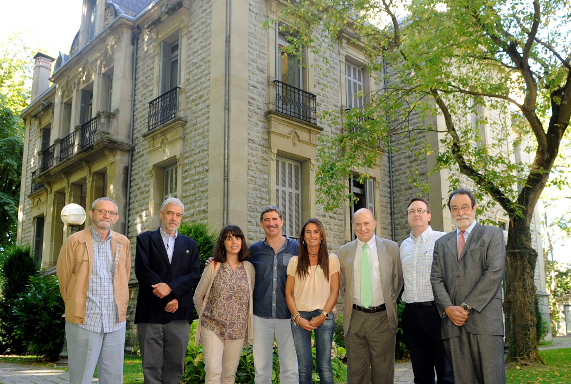Reflections of the scientific committee on reformulating cities
What can be done with the areas surrounding cities? How to improve sustainability in cities in a crisis situation? How to approach mobility in a context of aging populations? How to increase urban biocapacity and biodiversity? These are some of the thoughts put forward by the experts of the 5th Conama Local Scientific Committee, who met on 12 September in Vitoria-Gasteiz, at the European Green Capital 2012 headquarters:

-Fernando Prats, town development architect: "The key is not money ... it's more a matter of creativity
"Today you have to understand what the global challenges are and know how to adapt them to each specific place. Both aspects are important"
"The most important feature of global change, beyond the economic crisis, is stressing the planet's life systems. Cities are behind almost 70% of the impacts generated by human beings. We are not aware of this in cities".
"In order to take on these changes, the key is not money. It is a time for prudent policies and changes that need less money. It is more a question of creativity. Of renewing strategies and of the conviction, together with society, that this change is possible and necessary. Therefore, we have to take advantage of the experience of Vitoria".
-José Fariña, architect: "The real estate slowdown allows us to reconsider what we have done wrong"
"We have built cities in Spain that are quite inefficient. The entire periphery of large and medium sized cities is based on breaking cities down into small pieces in which the different functions are also separated. In one area you have offices, in another you have housing, in another the supermarkets ... This creates a problem in relation to facilities and mobility. If facilities are to be profitable; a school, library, public transport, you need a certain number of people to make them work. And those people are being brought together thanks to the private transport of individuals who come from far away. This cannot go on".
"And this is compounded by an aging population. The population pyramid is changing rapidly, but the cities we have been building have not been adapted for the elderly".
"Now the real estate business has come to a standstill and this will enable us to reconsider where we have gone wrong instead of making the problem worse. We have an opportunity to reformulate our cities".
-Ramon Folch, socio-ecologist: "There are now many peripheral areas in the hearts of our cities"
"Traditionally, peripheries responded to a geographical concept. They were the areas furthest from the city centre, the place where most of the problems seemed to concentrate, all the things we expelled from the city centres. But that geographical concept has changed in favour of a more sociological concept, to the extent that there are now peripheral areas in the hearts of our cities. Cities are now geographically divided into small areas and the situation has changed. We can no longer continue interpreting cities based on the same criteria as before".
"Utopias require a project, without a project they are only chimera. On the one hand, we have to pay attention to daily reality and solve today's problems but, on the other hand, we should be paying attention to what will probably happen in the near and distant future".
-Luis Andrés Orive, engineer: "Constant urbanisation separates you from the biological processes that exist in nature".
"Constant urbanisation separates you from the biological processes that exist in nature". Nevertheless, generating greater biocapacity and biodiversity in urban systems is fundamental. Natural outlying areas work in a systemic, ecological fashion, they contribute to making cities more harmonious, less imposing and less aggressive".
"In Vitoria, this is extremely important. Of all the environmental policies, perhaps the Green Belt has had a greatest bearing on Vitoria being appointed European Green Capital. The Green Belt comprises a number of natural areas that provide a different aspect to the area surrounding Vitoria and is something citizens clearly recognise. These areas have an ecological value but they are also areas that citizens have made their own, they have internalised them as something belonging to them".
-Jorge Ozáriz, engineer: "The European Green Capital award should not be a full stop, but an incentive to continue working on these lines"
"The Green Capital award for Vitoria implies the acknowledgement of almost three decades of continuous work based on a consensus within the City Council and among Vitoria citizens that has led to a number of projects that were originally seen as utopian but that have become reality over time. However, Vitoria still has many challenges to address: the European Green Capital award should not be a full stop, but an incentive to continue working on these lines, which still need a lot of effort and a lot of imagination".
[The image: The deputy mayor and councillor of the Environment of Vitoria-Gasteiz, Idoia Garmendia, receives the members of the 5th Conoama Local Scientific Committee, together with the president and the chief executive of Fundación Conama at Palacio de Zulueta, the European Green Capital headquarters.]











